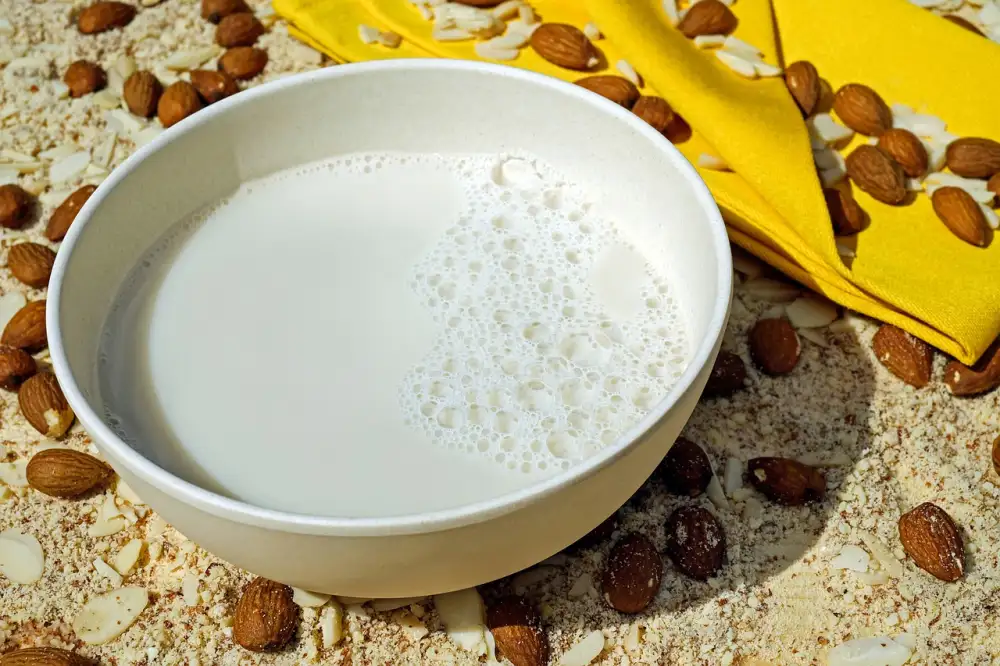Unveiling the Shelf Life of Almond Milk: Does It Go Bad? | Foodie's Playground

Almond milk has gained popularity among health-conscious individuals as a dairy-free alternative. But have you ever wondered how long almond milk can last before it goes bad? Understanding the shelf life of almond milk is crucial to ensure that you are consuming a fresh and safe product. In this article, we will delve into the factors that affect the shelf life of almond milk, signs of spoilage to look out for, and proper storage tips to extend its freshness. So let's dive in and uncover the secrets behind almond milk's shelf life!
How Long Does Almond Milk Last?
Almond milk, a popular alternative to dairy milk, has a relatively long shelf life compared to fresh cow's milk. Unopened almond milk can last up to a few months past the expiration date when stored properly. However, once opened, its lifespan decreases significantly. On average, opened almond milk lasts about 7-10 days in the refrigerator. It is crucial to consume it within this timeframe to ensure freshness and avoid any potential health risks.
Factors Affecting the Shelf Life of Almond Milk
Several factors can affect the shelf life of almond milk, including its packaging, storage conditions, and the presence of additives or preservatives.
Packaging plays a crucial role in maintaining the freshness of almond milk. Most almond milk products are sold in cartons or bottles that are designed to protect against light and air exposure. These containers help to prevent oxidation and microbial contamination, which can shorten the shelf life.
Storage conditions also impact the longevity of almond milk. It is essential to store almond milk in a cool and dry place away from direct sunlight. Exposure to heat and light can accelerate spoilage and cause off-flavors to develop.
The presence of additives or preservatives can significantly extend the shelf life of almond milk. Some brands may add stabilizers, such as carrageenan or guar gum, which help prevent separation and maintain texture over time. Additionally, certain brands may use natural or artificial preservatives to inhibit bacterial growth and prolong shelf life.
It is important to note that homemade almond milk typically has a shorter shelf life compared to commercially produced ones. Homemade almond milk lacks preservatives, making it more susceptible to spoiling quickly.
By understanding these factors affecting the shelf life of almond milk, consumers can make informed decisions about their purchase and storage practices to ensure they enjoy fresh and safe almond milk for longer periods.
Signs of Spoilage in Almond Milk
Just like any other food product, almond milk can spoil if not stored properly or consumed within a certain timeframe. Here are some signs to look out for to determine if your almond milk has gone bad:
1. Foul odor: Fresh almond milk has a mild, nutty aroma. If you notice a sour or unpleasant smell, it is likely that the milk has spoiled.
2. Strange texture or consistency: Almond milk should have a smooth and creamy texture. If you observe any clumps, curdling, or separation, it indicates spoilage.
3. Off taste: Almond milk should have a slightly sweet and nutty flavor. If it tastes sour, bitter, or rancid, it is best to discard it.
4. Mold growth: Visible mold growth on the surface of almond milk is a clear indication of spoilage. Do not consume the milk if you see any mold.
It's important to note that these signs may vary depending on the brand and type of almond milk. Always check the expiration date and trust your senses when determining if your almond milk is still safe to consume.
Proper Storage Tips for Extending the Shelf Life of Almond Milk
Proper storage is crucial in extending the shelf life of almond milk. Here are some tips to keep your almond milk fresh and safe for consumption. First, always refrigerate almond milk at a temperature below 40°F (4°C) to slow down bacterial growth. Additionally, make sure to seal the container tightly after each use to prevent air exposure and contamination. Avoid storing almond milk near strong-smelling foods as it can absorb odors easily. Lastly, check the expiration date on the packaging and consume it before that date for optimal freshness. By following these storage tips, you can enjoy your almond milk for a longer period of time.
In conclusion, it is important to understand the shelf life of almond milk in order to enjoy it fresh and safe. Almond milk can last for several weeks if stored properly in the refrigerator. However, factors such as temperature, exposure to light, and contamination can affect its shelf life. It is crucial to check for signs of spoilage before consuming almond milk, such as a sour smell or curdling. By following proper storage tips, such as keeping it refrigerated and tightly sealed, you can extend the shelf life of almond milk and ensure its quality. So go ahead and savor every sip of your almond milk knowing that it is fresh and safe for consumption.
Published: 09. 01. 2024
Category: Health



